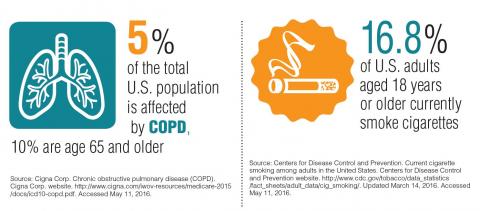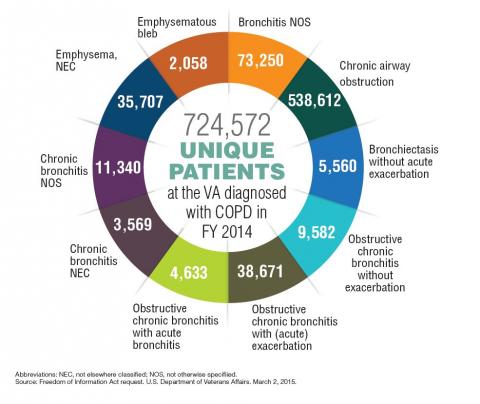Fifteen million Americans report that they have been diagnosed with chronic obstructive pulmonary disease (COPD), a group of diseases that cause airflow blockage and breathing-related problems, including emphysema, chronic bronchitis, and in some cases asthma. It is both preventable and treatable, and yet it is a significant cause of mortality. The World Health Organization reports that COPD was the fifth leading cause of death in 2002, and the total deaths from COPD are projected to increase by more than 30% in the next 10 years.
According to the CDC, people aged 65 to 74 years; non-Hispanic whites; women; current or former smokers; and those with a history of asthma are especially at risk for COPD, as well as people who are unemployed, retired, or unable to work; those with less than a high school education; and people with lower incomes. Prevalence is directly related to smoking.
Because COPD exacerbations and comorbidities contribute significantly to the overall severity in individual patients, the Global Initiative for Chronic Obstructive Lung Disease (GOLD) developed guidelines that combine patient risk and the severity of their symptoms. According to GOLD, morbidity from COPD may be affected by other comorbid chronic conditions, including cardiovascular disease, skeletal muscle dysfunction, metabolic syndrome, osteoporosis, depression, and lung cancer.
Any patient who has dyspnea, chronic cough or sputum production, and other risk factors for the disease should be examined for potential COPD diagnosis. According to GOLD guidelines, COPD assessment should “determine the severity of the disease, including the severity of airflow limitation, the impact on the patient’s health status, and the risk of future events (such as exacerbations, hospital admissions, or death), in order to guide therapy.”



